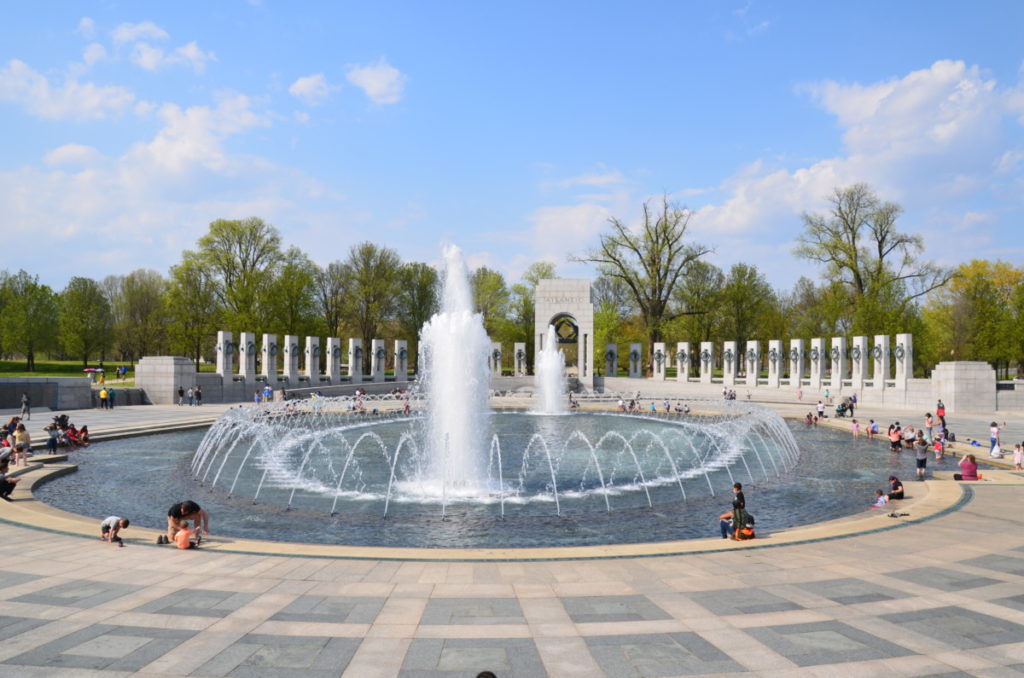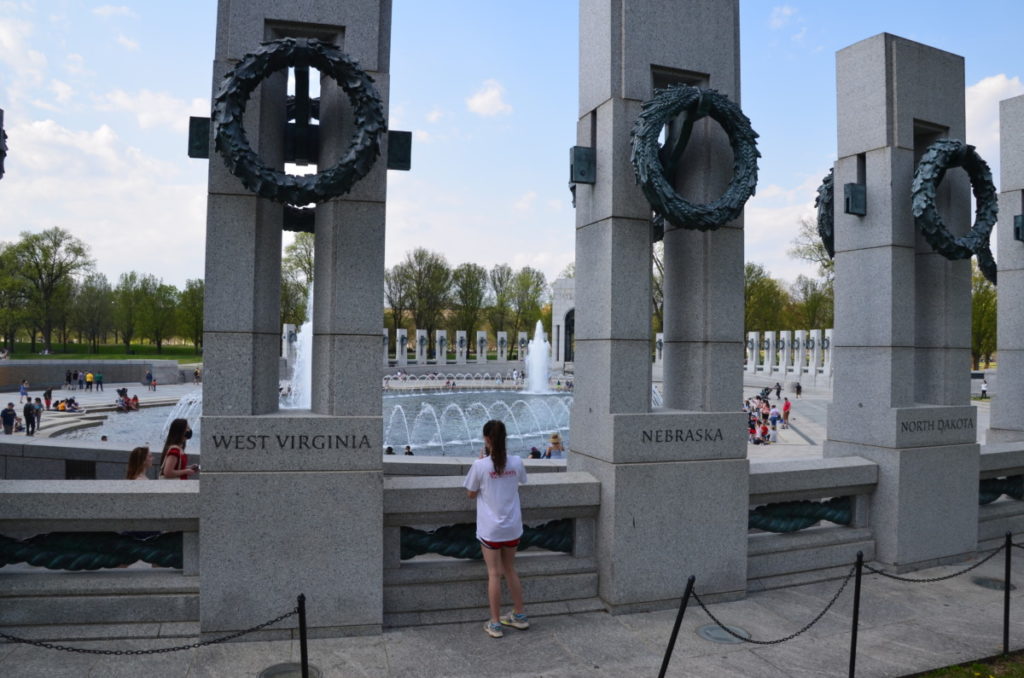We desperately needed a spring break trip in 2021. The pandemic kept us home for spring break 2020 and symbolically, I couldn’t let this ruin this year’s spring break. We chose to drive to Washington, DC. From previous posts, you can read about stops along the way – Berkeley Plantation on the James River, Historic Jamestowne and Yorktown.
The National Mall
Since the Smithsonian and National Zoo, as well as most other museums, were closed to the public due to the pandemic, we spent most of our time exploring the National Mall and Memorial Parks.
Getting There and Costs
The US National Park Service (NPS) runs all the memorials and doesn’t charge any fees. I’d heard that parking can be tough so we took the Metro from our hotel in Alexandria, VA to L’Enfant Plaza. The hotel assured us that the subway wouldn’t be crowded. Sure enough, we were the only people in our subway car. From L’Enfant Plaza, we had about a one-mile walk to our first destination.
Jefferson Memorial
The Jefferson Memorial is one of my favorites because it’s located near the cherry blossoms. Back in 1909, the city of Tokyo donated 2,000 trees to the United States. Unfortunately, the trees, infested with insects and disease, were destroyed. Thankfully, the Japanese sent a larger batch of 3,000 cherry trees in 1912. Today the cherry blossoms burst with shades of light pink and white along the Tidal Basin during the early spring for all to enjoy.
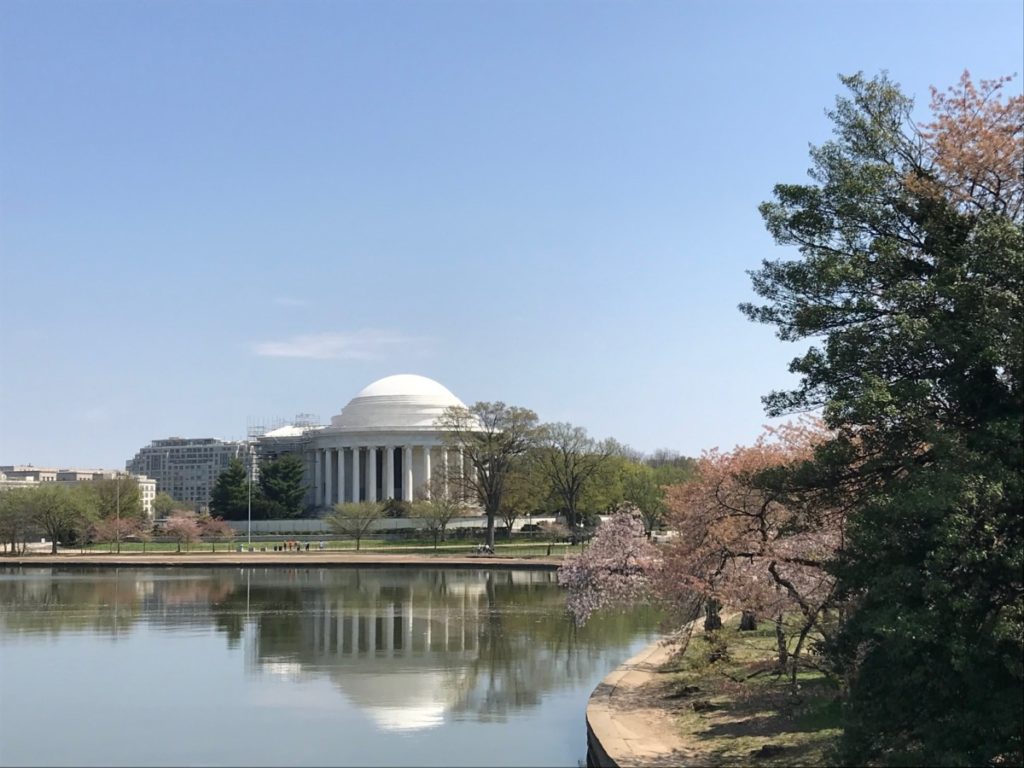
Surrounded by these blossoms, we walked to the white, dome-shaped Thomas Jefferson Memorial. We climbed the steps to the rotunda where a black granite statue of Thomas Jefferson towered above us. A hushed silence fell as everyone read the four quotations carved into the walls. Afterward, we discovered a small museum on the lower level.
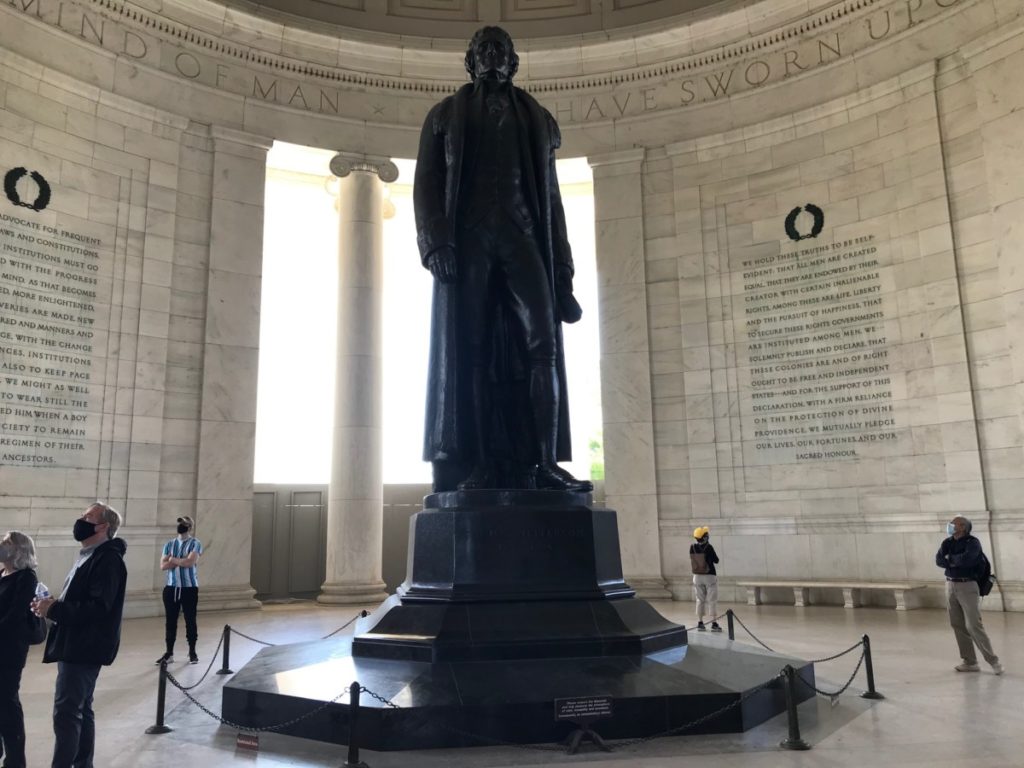
Turning around, we could see directly to the White House on the other side of the National Mall. From here, we walked past the FDR Memorial to the MLK Jr. Memorial.
Martin Luther King Jr. Memorial
Completed in 2011, The Martin Luther King Jr. Memorial is one of the newer monuments. Back in 1963, MLK delivered his “I Have a Dream” speech from the Lincoln Memorial during the March on Washington for Jobs and Freedom. In it, he quotes a part of the Declaration of Independence, written by Thomas Jefferson. It’s no accident that the MLK Jr. Memorial stands directly between the Lincoln and Jefferson Memorials.
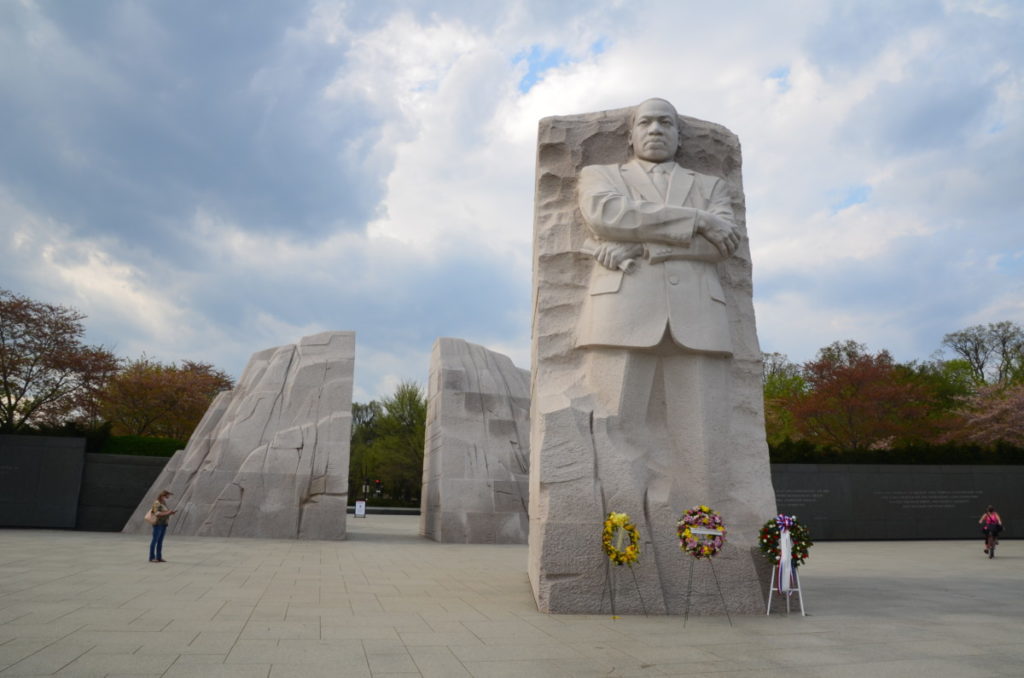
Upon first glance, the sculpture of MLK shows a man standing proudly from a stone pillar. However, the meaning is much deeper than that. MLK is actually attached to the “stone of hope that rises out of the mountain of despair.” This was a line from his speech at the Lincoln Memorial. Behind MLK is the mountain of despair. Most visitors reach the “stone of hope” by walking through the cut-out in the “mountain of despair.”
World War II Memorial
By this point, we’d walked almost two miles. We headed to the WWII Memorial. Situated on the mall between the Washington Monument and the Lincoln Reflecting Pool, the memorial features a large water fountain. Two victory pavilions, one honoring the Atlantic campaign and the other the Pacific campaign, sit on opposite sides of the Rainbow Pool. Columns representing the 48 states and 8 territories flank both sides of the pavilions.
Looking westward to the Lincoln Memorial, the Freedom Wall displays 4,048 gold stars. Each star represents 100 deaths. Underneath the stars is the quote, “Here we mark the price of freedom.”
The Washington Monument
All the memorials and monuments are free to the public. However, the Washington Monument charges a small fee to ride up to the observation deck. In all my time in DC, I’ve never wanted to visit the top. How safe can an elevator originally built in the 1880s be?
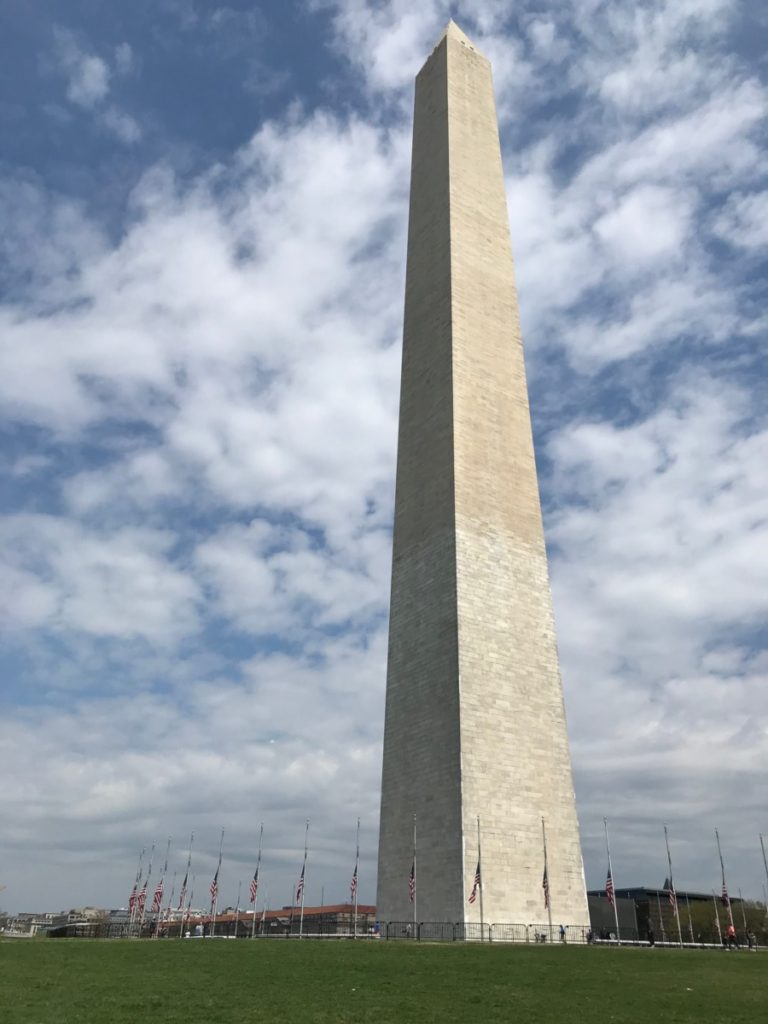
Construction began in 1848 but stopped in 1854 due to a lack of funds. When Congress resumed building the structure in the 1870s, they used another quarry to provide stones. Visitors today can still see the change of color in the stones about one-third of the way up. When finally completed in 1884, the Washington Monument was the tallest structure in the world.
Looking eastward, we had a clear view of the US Capitol as well as the Smithsonian buildings surrounding the grassy mall area.
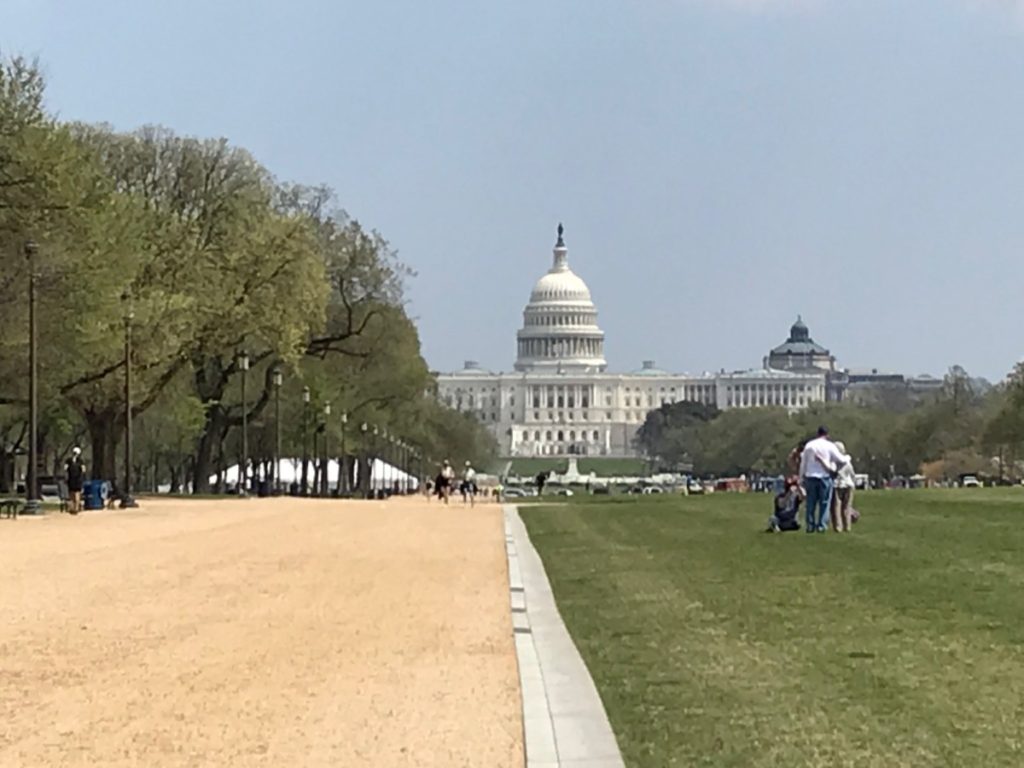
The Smithsonian Institute Building
The original Smithsonian building (often called the Castle) was not the home of the founder, James Smithson. In fact, Smithson, who bequeathed his fortune for the museum, never visited the United States. James Renwick built the red sandstone castle in 1855 and it served as the museum’s only building until 1881. Today, the Castle houses the administrative offices of the Smithsonian which includes 19 museums, galleries, gardens and a zoo.

Although closed due to the pandemic, we walked around the Castle to the Enid A. Haupt Gardens, which were open. Founded in 1987, the gardens offered a quiet place to stroll and take a break from our day. As part of the National Cherry Blossom Festival’s “Art in Bloom” exhibit, the Japanese embassy featured three sculptures in the garden.
Dwight D. Eisenhower Memorial
The newest monument (September 2020) is the Eisenhower Memorial. Located across from the National Museum of Air & Space, I felt underwhelmed when I spotted all the concrete. Built in front of the non-descript LBJ Department of Education building, the memorial features two concrete blocks with a quote and a statue. One side highlights Eisenhower as a WWII general and the other as president. A third statue of Ike as a young boy sits at the entrance.
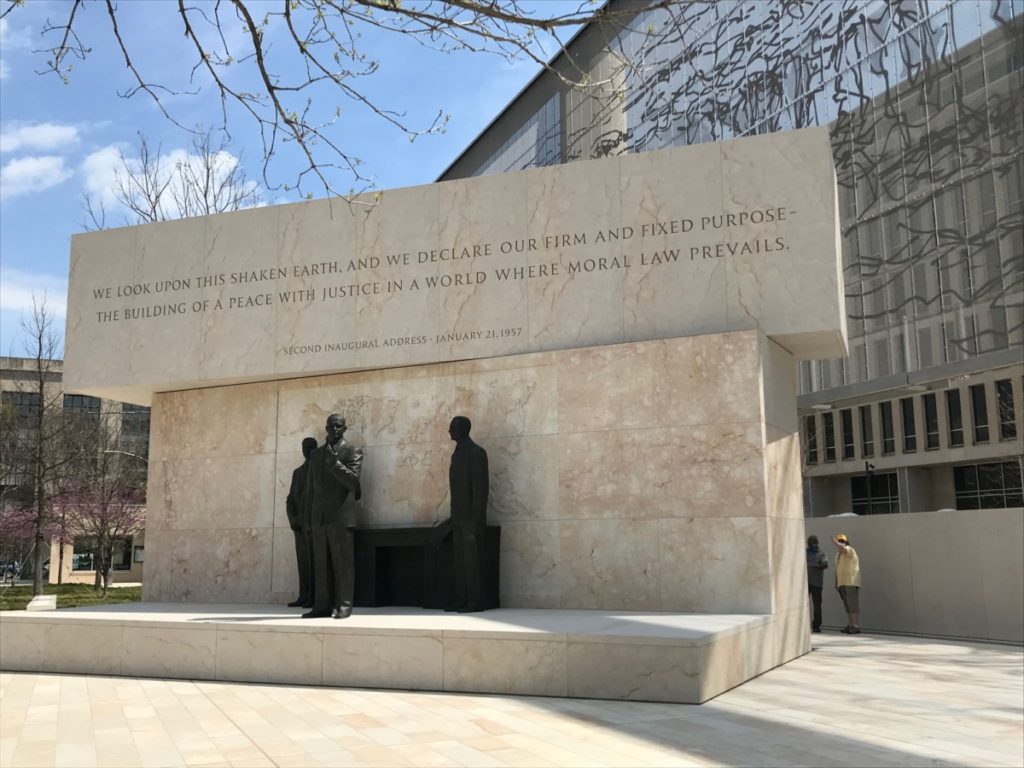
A stainless steel tapestry featuring scenes from Normandy hangs above in an effort to hide the building behind it. To be honest, it was hard to see in the daylight. I’ve since read that the tapestry looks much better at night.
Conclusion
By this time, we had walked 3.5 miles and were ready to take the Metro back to our hotel. For more information, visit the NPS website for the National Mall and Memorial Parks here. Stay tuned for the next post when we visited some of the other memorials.
Please note that the Smithsonian Museums and Zoo are reopening. Check their website here to get the latest information.

